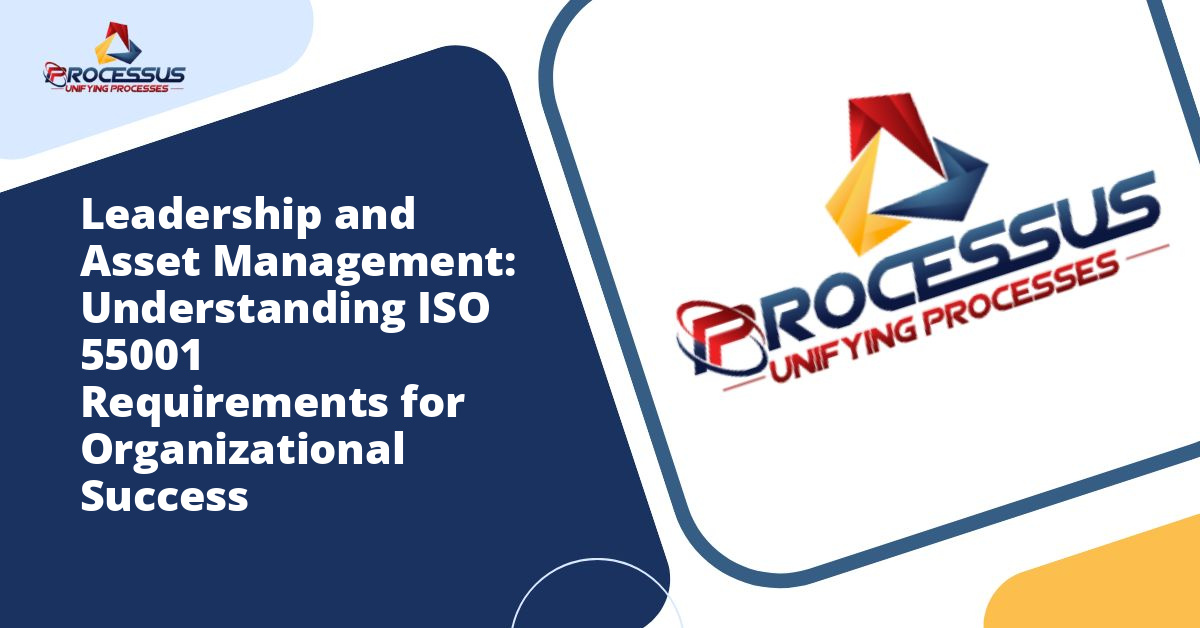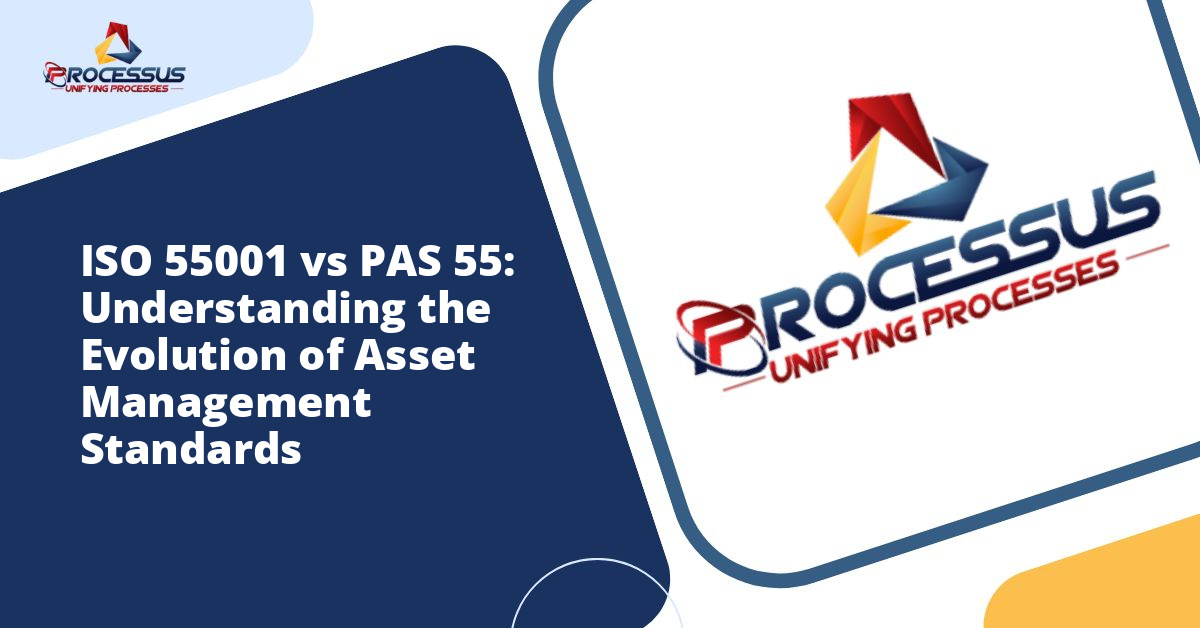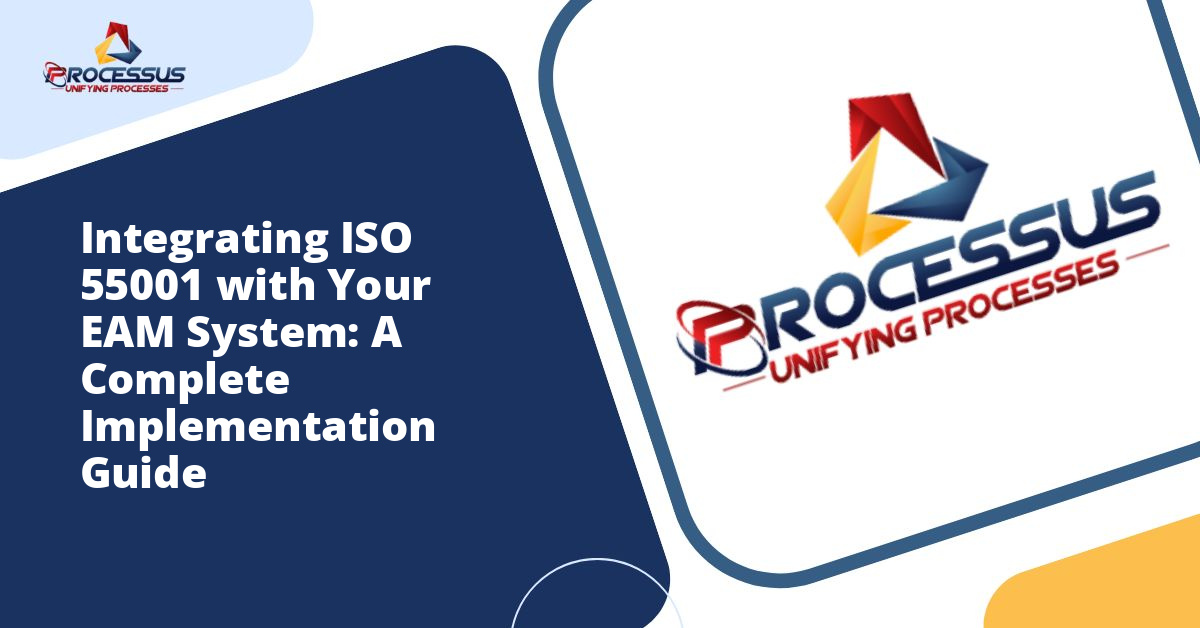In today’s competitive industrial landscape, organizations are constantly seeking ways to optimize their asset management practices while reducing operational costs and minimizing unexpected equipment failures. Predictive maintenance has emerged as a cornerstone strategy for achieving these objectives, particularly when implemented within the framework of ISO 55001, the international standard for asset management. This comprehensive guide explores how predictive maintenance strategies align with ISO 55001 requirements to create sustainable, value-driven asset management systems.
Understanding ISO 55001 and Its Role in Modern Asset Management
ISO 55001 represents a fundamental shift in how organizations approach asset management. This international standard provides a systematic framework for managing physical assets throughout their entire lifecycle, from acquisition through operation to eventual disposal. The standard emphasizes the importance of aligning asset management practices with organizational objectives while delivering value to stakeholders. You might also enjoy reading about ISO 55001 for Utilities: Transforming Water and Energy Sector Asset Management.
At its core, ISO 55001 requires organizations to adopt a holistic approach to managing assets. This includes establishing clear policies, developing strategic asset management plans, and implementing processes that ensure optimal asset performance. The standard recognizes that effective asset management goes beyond simple maintenance activities and encompasses financial planning, risk management, and performance monitoring. You might also enjoy reading about The Financial Benefits of ISO 55001 Implementation: A Complete Guide to Asset Management ROI.
The relationship between predictive maintenance and ISO 55001 is particularly significant. While the standard does not prescribe specific maintenance strategies, it strongly encourages organizations to adopt data-driven approaches that enable informed decision-making. Predictive maintenance perfectly embodies this philosophy by using advanced technologies and analytical techniques to forecast equipment failures before they occur. You might also enjoy reading about ISO 55001 Asset Management Plans: A Practical Guide for Organizations.
The Evolution of Maintenance Strategies
To fully appreciate the value of predictive maintenance within the ISO 55001 framework, it is essential to understand how maintenance strategies have evolved over time. Traditional reactive maintenance, often called “run-to-failure,” involved fixing equipment only after it broke down. This approach resulted in costly emergency repairs, production losses, and safety risks.
Organizations then moved toward preventive maintenance, which involves servicing equipment at predetermined intervals regardless of its actual condition. While this strategy reduced unexpected failures, it often led to unnecessary maintenance activities and premature part replacements, resulting in wasted resources and increased costs.
Predictive maintenance represents the next evolutionary step. By monitoring equipment condition in real-time and using advanced analytics to predict when maintenance is actually needed, organizations can optimize maintenance schedules, reduce costs, and maximize asset availability. This approach aligns perfectly with ISO 55001’s emphasis on value creation and risk-based decision-making.
Core Principles of Predictive Maintenance
Predictive maintenance operates on several fundamental principles that make it particularly effective within an ISO 55001 framework. Understanding these principles is crucial for successful implementation.
Condition-Based Monitoring
The foundation of predictive maintenance lies in continuous or periodic monitoring of equipment condition. This involves collecting data on various parameters such as vibration, temperature, pressure, oil quality, and acoustic emissions. By establishing baseline measurements for normal operation, organizations can detect deviations that may indicate developing problems.
Modern sensor technology has made condition monitoring more accessible and affordable than ever before. Wireless sensors can be deployed across entire facilities, providing real-time data streams that feed into centralized monitoring systems. This comprehensive data collection supports the ISO 55001 requirement for evidence-based decision-making.
Data Analysis and Pattern Recognition
Collecting data is only the first step. The true value of predictive maintenance comes from analyzing this data to identify patterns and trends that indicate potential failures. Advanced analytical techniques, including machine learning algorithms, can process vast amounts of data to detect subtle changes that human observers might miss.
These analytical capabilities enable organizations to move from simply detecting problems to predicting when failures are likely to occur. This forward-looking approach supports proactive planning and resource allocation, key requirements of ISO 55001’s strategic asset management planning process.
Remaining Useful Life Estimation
One of the most valuable outputs of predictive maintenance is the ability to estimate the remaining useful life of equipment and components. This information allows organizations to plan maintenance activities at optimal times, balancing the need to prevent failures against the desire to maximize asset utilization.
Remaining useful life estimation also supports ISO 55001’s requirements for lifecycle management and financial planning. By understanding when assets will likely need replacement, organizations can budget appropriately and avoid unexpected capital expenditures.
Implementing Predictive Maintenance Within ISO 55001
Successfully implementing predictive maintenance strategies within an ISO 55001 framework requires careful planning and execution. The following sections outline key implementation steps that align with the standard’s requirements.
Establishing Clear Objectives and Scope
ISO 55001 requires organizations to establish clear asset management objectives that support overall business goals. When implementing predictive maintenance, these objectives might include reducing unplanned downtime, extending asset life, improving safety, or optimizing maintenance costs.
Defining the scope of predictive maintenance activities is equally important. Not all assets warrant the same level of monitoring and analysis. Organizations should prioritize critical assets whose failure would have significant operational, financial, or safety impacts. This risk-based approach aligns with ISO 55001’s emphasis on proportionate and appropriate asset management practices.
Developing a Strategic Asset Management Plan
The Strategic Asset Management Plan (SAMP) is a cornerstone requirement of ISO 55001. This high-level document outlines how asset management activities will support organizational objectives. Predictive maintenance should be integrated into the SAMP as a key strategy for optimizing asset performance and managing risk.
The SAMP should address how predictive maintenance technologies will be selected, deployed, and maintained. It should also outline the resources required, including personnel training, data infrastructure, and analytical tools. By incorporating these elements into the SAMP, organizations ensure that predictive maintenance receives appropriate strategic attention and support.
Creating Detailed Asset Management Plans
While the SAMP provides strategic direction, detailed asset management plans specify exactly how individual assets or asset classes will be managed. These plans should describe the specific predictive maintenance techniques that will be applied to different assets, monitoring frequencies, data collection methods, and response protocols when potential problems are identified.
For example, rotating equipment might be monitored using vibration analysis, while electrical systems might rely on thermography and partial discharge testing. The plans should also specify performance indicators that will be used to evaluate the effectiveness of predictive maintenance activities.
Building the Required Capabilities
ISO 55001 emphasizes the importance of having competent personnel to carry out asset management activities. Implementing predictive maintenance requires developing new capabilities within the organization, including technical skills for operating monitoring equipment, analytical skills for interpreting data, and strategic skills for making maintenance decisions based on predictive insights.
Organizations should invest in training programs that develop these capabilities. This might include formal education in condition monitoring techniques, certification programs for specific technologies, or partnerships with equipment manufacturers and technology vendors who can provide specialized expertise.
Technologies Enabling Predictive Maintenance
Modern predictive maintenance relies on an array of advanced technologies that collect, transmit, and analyze equipment data. Understanding these technologies is essential for making informed decisions about predictive maintenance investments.
Vibration Analysis
Vibration analysis is one of the most widely used predictive maintenance techniques, particularly for rotating equipment such as motors, pumps, and compressors. By monitoring vibration patterns, technicians can detect issues such as misalignment, imbalance, bearing wear, and looseness long before they cause equipment failure.
Modern vibration monitoring systems can range from handheld devices used for periodic measurements to permanently installed sensors that provide continuous monitoring. Advanced systems use artificial intelligence to automatically analyze vibration data and alert maintenance personnel when anomalies are detected.
Thermography
Infrared thermography enables non-contact temperature measurement, making it ideal for detecting hot spots in electrical systems, insulation failures, and process inefficiencies. Regular thermographic inspections can identify problems that would be impossible to detect through visual inspection alone.
Thermal imaging cameras have become more affordable and user-friendly, making this technology accessible to organizations of all sizes. Some facilities now employ drones equipped with thermal cameras to inspect large or hard-to-reach equipment, further expanding the capabilities of predictive maintenance programs.
Oil Analysis
For equipment with lubrication systems, oil analysis provides valuable insights into equipment condition. By examining oil samples for wear particles, contamination, and chemical degradation, organizations can detect developing problems in engines, gearboxes, and hydraulic systems.
Oil analysis programs typically involve periodic sampling and laboratory testing. Results are trended over time to identify changes that may indicate equipment deterioration. Some advanced systems now offer online oil monitoring that provides continuous condition assessment.
Ultrasonic Testing
Ultrasonic testing uses high-frequency sound waves to detect problems such as compressed air leaks, electrical arcing, bearing lubrication issues, and steam trap failures. This technique is particularly valuable because it can identify problems that produce little visual or audible evidence.
Portable ultrasonic detectors allow technicians to survey large areas quickly, identifying multiple issues during a single inspection. The immediate feedback provided by ultrasonic testing enables rapid problem resolution, reducing energy waste and preventing equipment damage.
Internet of Things and Connected Sensors
The Internet of Things (IoT) has revolutionized predictive maintenance by enabling widespread deployment of low-cost sensors that continuously monitor equipment condition. These sensors can measure virtually any parameter, including temperature, pressure, flow, vibration, and power consumption.
IoT sensors transmit data wirelessly to cloud-based platforms where sophisticated analytics automatically identify anomalies and trends. This technology democratizes predictive maintenance, making it accessible to organizations that previously lacked the resources for comprehensive condition monitoring programs.
Data Management and Analysis
The effectiveness of predictive maintenance depends not just on collecting data but on managing and analyzing it effectively. ISO 55001 requires organizations to determine what information is needed for asset management decision-making and to ensure this information is accurate, reliable, and accessible.
Creating a Data Infrastructure
Successful predictive maintenance requires a robust data infrastructure that can capture, store, and process large volumes of equipment data. This infrastructure typically includes sensors and monitoring equipment, communication networks, data storage systems, and analytical platforms.
Cloud computing has made sophisticated data infrastructure more accessible to organizations of all sizes. Cloud-based platforms can handle massive data volumes, provide advanced analytical capabilities, and offer the scalability needed to expand predictive maintenance programs over time.
Applying Advanced Analytics
Traditional approaches to analyzing condition monitoring data relied heavily on human expertise and experience. While this expertise remains valuable, advanced analytics and machine learning are increasingly being applied to extract deeper insights from equipment data.
Machine learning algorithms can identify complex patterns that indicate developing problems, often detecting issues earlier than traditional methods. These algorithms continuously improve their predictive accuracy as they process more data, creating a virtuous cycle of improving maintenance effectiveness.
Integrating with Other Systems
Predictive maintenance data should not exist in isolation. To maximize its value, this data should be integrated with other organizational systems such as computerized maintenance management systems (CMMS), enterprise asset management (EAM) platforms, and enterprise resource planning (ERP) systems.
This integration enables automatic work order generation when predictive maintenance analytics indicate that service is needed. It also facilitates better planning by providing maintenance teams with complete information about equipment condition, maintenance history, and parts availability.
Measuring and Improving Performance
ISO 55001 requires organizations to monitor, measure, analyze, and evaluate asset management performance. For predictive maintenance programs, this involves tracking both leading and lagging indicators that demonstrate program effectiveness.
Key Performance Indicators
Effective KPIs for predictive maintenance might include the percentage of maintenance activities that are planned versus reactive, mean time between failures, maintenance cost per unit of production, and equipment availability. Organizations should also track the accuracy of failure predictions and the lead time provided by predictive analytics.
These metrics should be reviewed regularly and reported to management as part of the asset management performance review required by ISO 55001. Trends in these metrics provide insights into whether predictive maintenance strategies are delivering expected benefits and where improvements may be needed.
Continuous Improvement
The principle of continuous improvement is central to ISO 55001. Organizations should regularly evaluate their predictive maintenance programs to identify opportunities for enhancement. This might involve expanding monitoring coverage to additional assets, implementing new analytical techniques, or refining alarm thresholds based on operational experience.
Lessons learned from equipment failures should be captured and used to improve predictive models and monitoring strategies. This learning process ensures that predictive maintenance programs become increasingly effective over time.
Overcoming Implementation Challenges
While predictive maintenance offers significant benefits, organizations often face challenges when implementing these strategies within an ISO 55001 framework. Understanding these challenges and how to address them is crucial for success.
Organizational Culture and Change Management
Moving from reactive or preventive maintenance to predictive approaches requires significant cultural change. Maintenance personnel may need to develop new skills and adopt different working methods. Operations staff may need to accept equipment shutdowns for maintenance even when the equipment appears to be running normally.
Successful implementation requires effective change management, including clear communication about the benefits of predictive maintenance, involvement of stakeholders in planning and implementation, and visible support from organizational leadership.
Initial Investment Requirements
Implementing comprehensive predictive maintenance programs requires investment in sensors, analytical tools, data infrastructure, and training. Organizations may struggle to justify these costs, particularly when benefits may take time to materialize.
A phased implementation approach can help address this challenge. By starting with critical assets where failures have the greatest impact, organizations can demonstrate value quickly and build support for expanded implementation. The business case for predictive maintenance should consider both cost savings and risk reduction benefits.
Data Quality and Integration
Predictive maintenance is only as good as the data it relies upon. Poor sensor placement, inadequate calibration, or data transmission problems can undermine predictive accuracy. Similarly, lack of integration between predictive maintenance systems and other organizational systems can limit program effectiveness.
Organizations should establish clear data quality standards and regularly verify that monitoring equipment is functioning correctly. Investment in proper system integration pays dividends by enabling seamless workflows and better decision-making.
The Future of Predictive Maintenance and ISO 55001
As technology continues to advance, the capabilities and accessibility of predictive maintenance will only increase. Artificial intelligence and machine learning will enable more accurate predictions with less human intervention. Edge computing will allow real-time analysis of equipment data at the point of collection, enabling faster response to developing problems.
Digital twins, virtual replicas of physical assets that simulate real-world behavior, will enhance predictive capabilities by allowing organizations to test different scenarios and optimize maintenance strategies without impacting actual operations. These virtual models will become increasingly sophisticated, incorporating not just mechanical and electrical characteristics but also operational context and environmental factors.
The integration of predictive maintenance with broader digital transformation initiatives will blur the lines between maintenance, operations, and asset management. Organizations will move toward fully integrated asset performance management systems that optimize not just individual assets but entire production systems.
Throughout these technological advances, ISO 55001 will continue to provide a valuable framework for ensuring that predictive maintenance strategies align with organizational objectives and deliver sustainable value. The standard’s principles of leadership commitment, stakeholder engagement, risk-based thinking, and continuous improvement will remain relevant regardless of technological changes.
Conclusion
Predictive maintenance represents a powerful strategy for organizations seeking to optimize asset performance, reduce costs, and manage risk. When implemented within the framework of ISO 55001, predictive maintenance becomes part of a comprehensive asset management system that aligns with organizational strategy and delivers measurable value to stakeholders.
Success requires more than just deploying monitoring technology. Organizations must develop clear strategies, build necessary capabilities, establish robust data management practices, and foster a culture of continuous improvement. The journey toward mature predictive maintenance capabilities takes time and sustained commitment, but the benefits are substantial and lasting.
As organizations face increasing pressure to do more with less while maintaining safety and reliability, the combination of predictive maintenance and ISO 55001 provides a proven path forward. By leveraging advanced technologies within a structured management framework, organizations can transform their maintenance operations from a cost center into a strategic advantage that supports long-term success and sustainability.
The integration of predictive maintenance and ISO 55001 is not merely a technical exercise but a strategic imperative for organizations that depend on physical assets to deliver value. Those who embrace this integration position themselves to thrive in an increasingly competitive and complex operating environment.







